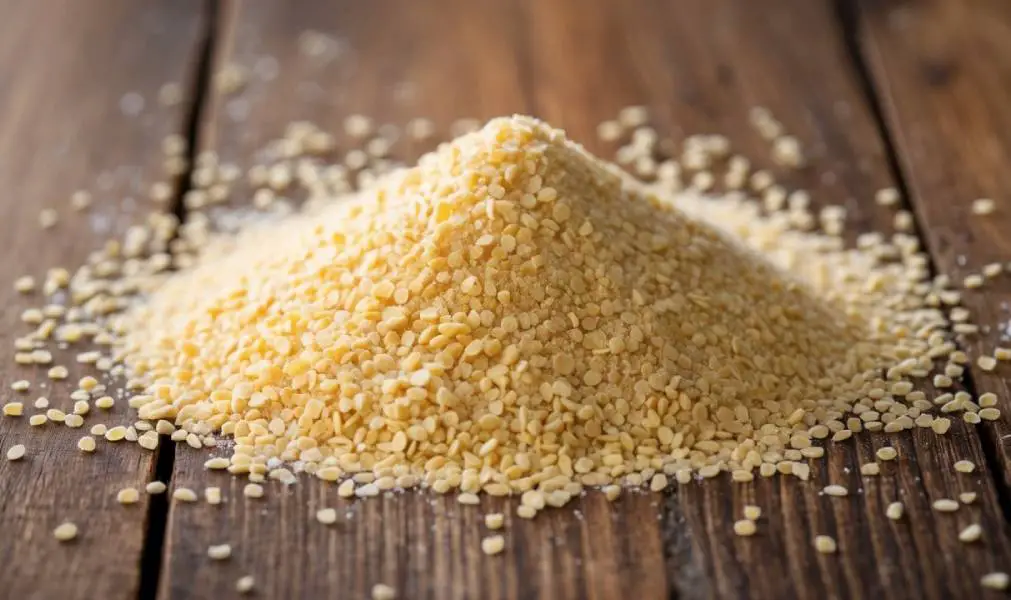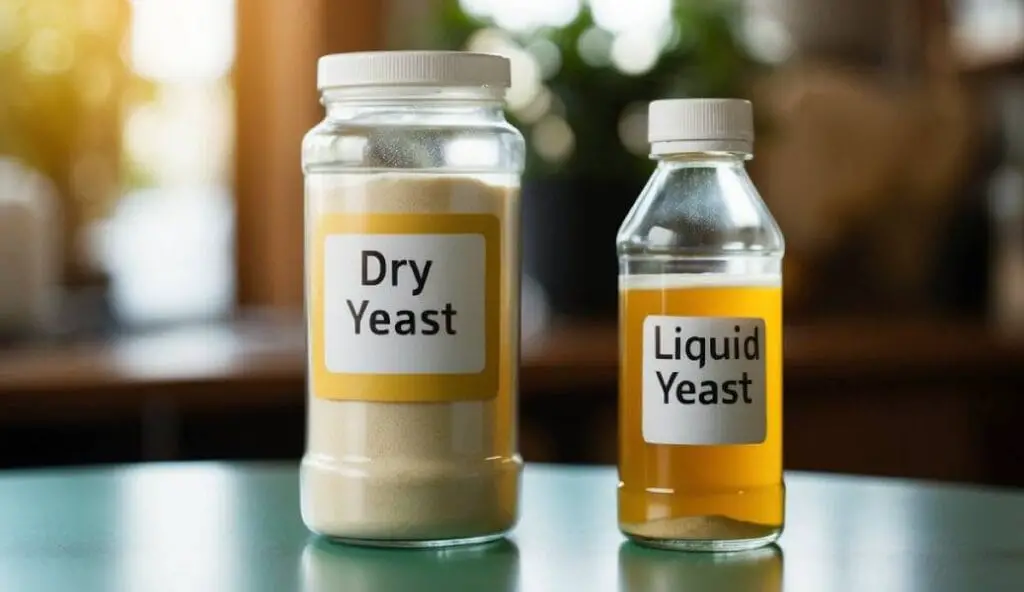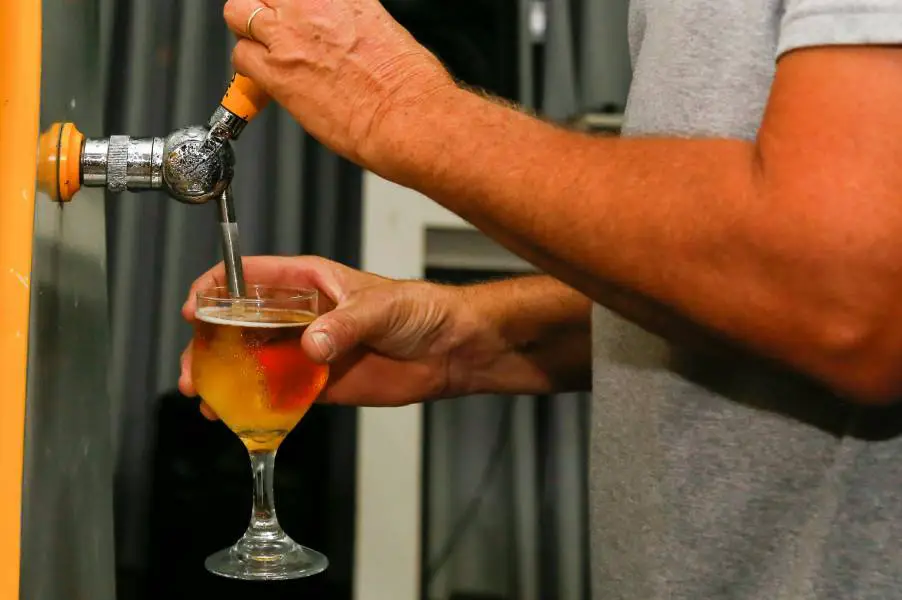Dry yeast vs liquid yeast, which one does the work better? Well, each has distinct characteristics in flavor, convenience, and shelf life. Whether you’re a beginner or a seasoned brewer, understanding the similarities and differences between the two can take your brewing game to the next level.
Dry Yeast vs Liquid Yeast Overview
Dry yeast and liquid yeast are two popular choices among brewers. Both play a crucial role in fermenting beer by converting sugars into alcohol and carbon dioxide. While dry yeast is known for its convenience and long shelf life, liquid yeast offers a wider variety of strains, allowing for more flavor customization.
Dry yeast is often preferred for its ease of use and storage, making it a go-to for beginners. Liquid yeast, on the other hand, is favored by experienced brewers who seek specific flavor profiles and characteristics. Both types bring unique qualities to the brewing process, impacting taste and fermentation efficiency.

Dry Yeas Overview
Dry yeast is a convenient choice for many brewers due to its long shelf life and easy storage. Packaged with a high cell count, it’s ready to pitch directly into the wort. For better results, you can sprinkle it on top of the cooled wort or rehydrate it in warm water.
Rehydrating the yeast helps activate the cells, allowing them to ferment more efficiently. This process involves mixing the yeast with lukewarm water and letting it sit for 15-30 minutes before pitching. Some brewers skip this step and still achieve good fermentation, showing the flexibility of using this type of yeast.
The cell count in dry yeast is higher than in liquid yeast, which means it typically ferments smoothly and faster. This high cell density also reduces the risk of contamination. The yeast is also available in various strains, making it suitable for different beer styles, from light ales to rich stouts, offering consistency in brewing.
Pros of Dry Yeast
- Long Shelf Life: The yeast can be stored for months without losing viability, making it a reliable option for brewers planning ahead or brewing infrequently.
- High Cell Count: Packaged with a high concentration of yeast cells, this yeast often leads to faster fermentation and a reduced chance of contamination.
- Ease of Use: The yeast is easy to use; it can be sprinkled directly into the wort without needing specialized equipment or additional preparation.
- Cost-Effective: The yeast is generally more affordable, making it a budget-friendly choice for both homebrewers and commercial brewers who want to save money.
- Less Risk of Contamination: The yeast’s production process typically involves fewer contaminants, making it a safer option for maintaining the purity of your brew.
Cons of Dry Yeast
- Limited Strain Variety: The yeast offers fewer strain options, potentially restricting brewers seeking specific flavor profiles for unique beer styles.
- Less Flavor Complexity: The yeast may not provide the same depth and complexity of flavors as liquid yeast, which can impact the overall taste of the beer.
- Requires Rehydration for Best Results: While it can be pitched directly, rehydrating the yeast is recommended for optimal performance, adding an extra step to the brewing process.

Liquid Yeast Overview
Liquid yeast offers brewers an extensive range of strains, making it a favorite for creating specific beer styles and unique flavors. The yeast also comes in a slurry or a smack pack, which needs to be activated before use. This activation process ensures the yeast is ready to ferment.
Adding liquid yeast to the wort typically involves preparing a yeast starter. A starter helps increase the yeast cell count, ensuring a vigorous fermentation process. This step is particularly important when brewing high-gravity beers. In such a beer (high gravity beer), a higher cell count is necessary to fully ferment the wort and achieve the desired alcohol content.
The yeast is known for its viability, meaning the yeast cells are alive and ready to work. However, it requires careful handling and storage, often needing refrigeration to maintain its quality. The delicate nature of this yeast can sometimes make it more prone to contamination; however, the flavor complexity it brings is worth the effort.
Pros of Liquid Yeast
- Wide Variety of Strains: The yeast offers diverse strains, allowing you to create specific beer styles and unique flavors more precisely.
- Rich Flavor Profiles: The yeast can produce more complex and nuanced flavors, enhancing the taste and character of the beer.
- Easier to Fine-Tune Fermentation: The yeast offers better control over fermentation characteristics. This allows brewers to fine-tune factors like temperature, which can impact the beer’s final flavor.
- Adaptable to Different Beer Styles: From lagers to ales, this yeast can be tailored to specific styles, allowing flexibility and creativity in crafting the desired brew.
Cons of Liquid Yeast
- Shorter Shelf Life: The yeast has a shorter shelf life and often requires refrigeration to maintain viability.
- Higher Cost: This yeast is generally more expensive than its counterpart. This makes it a less budget-friendly choice, especially for large batches or frequent brewing.
- Requires Careful Handling: The yeast is more sensitive to temperature changes and contamination, requiring careful storage and sanitation practices to enhance successful fermentation.

Comparison Between Dry and Liquid Yeast
Up to this point, you understand these two types of yeasts are vital in the beer-making process. However, did you know they have similarities and differences that can help you make the right choice? Well, here is what you need to know:
Similarities
- Both types of yeast play a key role in fermenting beer by converting sugars into alcohol and carbon dioxide.
- Both can produce high-quality beer when used correctly, offering consistency in flavor and performance for homebrewers and commercial brewers.
- Both require careful handling to avoid contamination.
- Both types can benefit from the use of a yeast starter, especially when brewing high-gravity beers or larger batches.
- Both contribute to the beer’s aroma and taste, influencing the final flavor profile and character of the brew.
- Both need proper storage to maintain their viability.
Differences
- Dry yeast has a longer shelf life and can be stored at room temperature, while liquid yeast requires refrigeration.
- Liquid yeast offers a wider variety of strains, providing more options for specialized brewing styles and unique flavor profiles.
- Dry yeast is typically more affordable, making it a budget-friendly choice, while liquid yeast is generally more expensive.
- Liquid yeast often requires a starter to increase cell count, whereas dry yeast usually has a high cell count already.
- Dry yeast can be pitched directly into the wort, while liquid yeast often needs to be activated or prepared first.
- Liquid yeast provides more control over fermentation conditions, offering brewers precision in flavor and aroma development.
The Main Difference Between Dry Yeast and Liquid Yeast
The main difference between dry and liquid yeast is the cell count and ease of use. Dry yeast has a higher cell count per packet, leading to faster fermentation and less risk of contamination. On the other hand, liquid yeast requires a starter to increase cell count but provides more strain options for specific flavor profiles.
When to Use Dry Yeast
The best time to use dry yeast is when you’re a beginner and want a straightforward, reliable fermentation process. It’s also ideal for brewing large batches due to its affordability and high cell count. Additionally, the yeast is great when you need a longer shelf life and easier storage options.
When to Use Liquid Yeast
Liquid yeast is best used in commercial brewing or when aiming for a specific beer style that requires a particular strain for unique flavors. It’s also preferred when brewing smaller batches that need precise flavor control, providing complexity and customization of the brew.
Which Is Better: Dry Yeast or Liquid Yeast?
Dry yeast is the better option between the two since it has a longer shelf life, higher cell count, and is more budget-friendly. It’s also easier to handle, especially for beginners, and provides reliable fermentation.

Frequently Asked Questions
What Is an Active Dried Yeast?
Active dried yeast is a type of yeast that has been dehydrated to preserve its shelf life. It requires rehydration in warm water (about 15-30 minutes) before use and is commonly used in brewing to ferment wort.
What Is the Difference Between Active Dried Yeast and Instant Yeast?
The difference between active dried yeast and instant yeast is in their preparation and use. Active dried yeast requires rehydration in warm water before adding to the wort, while instant dry yeast can be added directly to the wort without rehydration. Instant yeast also has finer granules, leading to faster fermentation.
Can You Brew Beer Without Yeast?
No, you cannot brew beer without yeast. Yeast is vital for fermentation, as it converts sugars into alcohol and carbon dioxide. Without yeast, beer would lack alcohol and carbonation, making it impossible to achieve the desired flavor and texture in the finished product.
Conclusion
Choosing between dry and liquid yeast depends on your brewing needs and experience level. Dry yeast offers convenience, affordability, and ease of use, making it ideal for beginners and large batches. Liquid yeast provides a wider range of strains and flavor complexity, suited for more advanced brewers seeking specific results.











